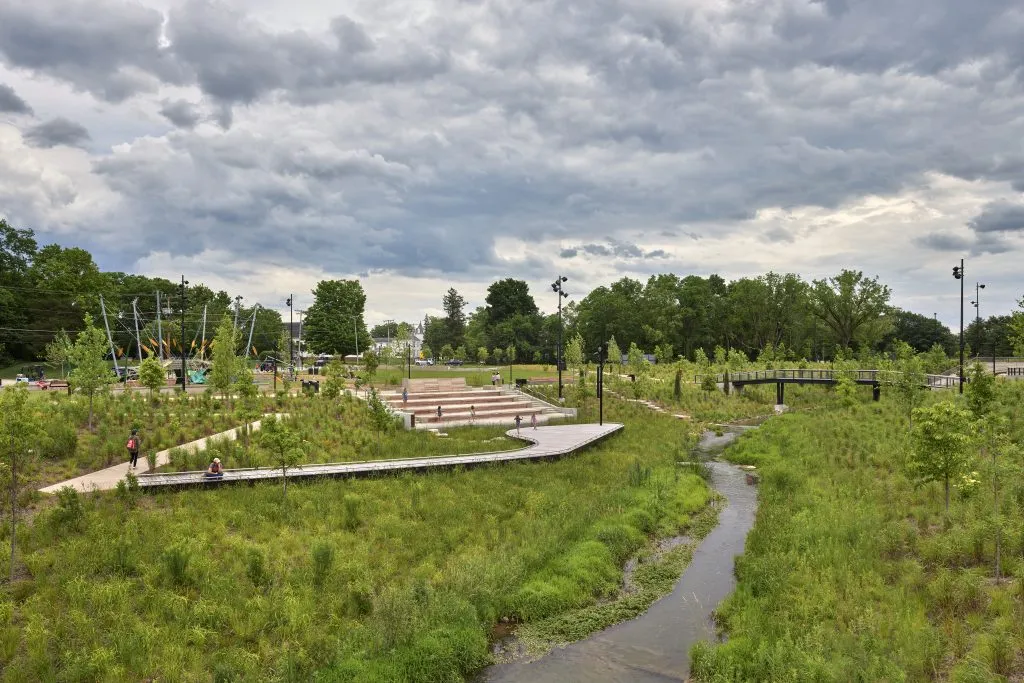In response to a significant flood event that inundated the town, increased vulnerability from escalating climate change events, and an aspiration for recognition as a design-forward town, the City of Westfield, Indiana, has overlaid strategic infrastructure with communal purpose to create a socially-purposeful, environmentally-resilient, and inclusive park focused on human engagement. Grand Junction acknowledges Westfield as a nascent, northern complement to Indiana’s modernist mecca, Columbus, as it addresses climate change flood abatement and riparian corridor reparation with design excellence for a new people-forward park.
Two weeks following DAVID RUBIN Land Collective’s selection to design the city’s new 7.8-acre downtown park, a 500-year storm event flooded the burgeoning hamlet. What was to be a civic park for citizens to gather suddenly required a stormwater infrastructure solution. In response to the challenge, Land Collective curated a collaboration which includes architecture firm, HWKN, Toronto-based strategic design studio, BMD (Bruce Mau Design), RATIO Architects, FlatLand Resources, and VS Engineering. To resolve the threat of flooding, Cool Creek, which bifurcates the park site in downtown Westfield, required stabilization and repair of its channelized profile. Today, the creek is once again a feature of the City as it once was celebrated in documents pre-1850, which described a town where citizens could engage with the creeks, streams, and each other in a verdant setting.
With this unique approach, a new park was created for the citizens of Westfield and their friends around which downtown development will grow. Built where five trails converge alongside Cool Creek, it has not taken long for Grand Junction to become a place for people to meet, eat, relax, work, skate, and explore. It is home to a café and winter skate rental facility, an ice rink, children’s playground, and in due course, an eye-catching outdoor stage and trailhead pavilion.
Redefining an infrastructure project needed for the mitigation of flooding, Grand Junction has come to embrace its new mission: a lively town center park with social overlay. Now, residents on foot or on bike can grab a coffee inside the Cafe/Skate Pavilion, and survey a generous, lush, resilient, and less turbulent landscape. Most importantly, they can engage with each other and identify in an accessible park uniquely Westfield. Thanks to this design vision, the citizens of Westfield can participate in a more active, experiential, and human-engaged future, together.
Project Recognition:
- 2023 ASLA Professional Awards, General Design – Honor Award
- 2023 INASLA Design Awards, General Design – Design Excellence
- 2023 National American Society of Landscape Architects Honor Award, General Design Category
- 2023 Monocle Design Award – Best Ecological Effort (#10 of Design Top 50 Globally)















